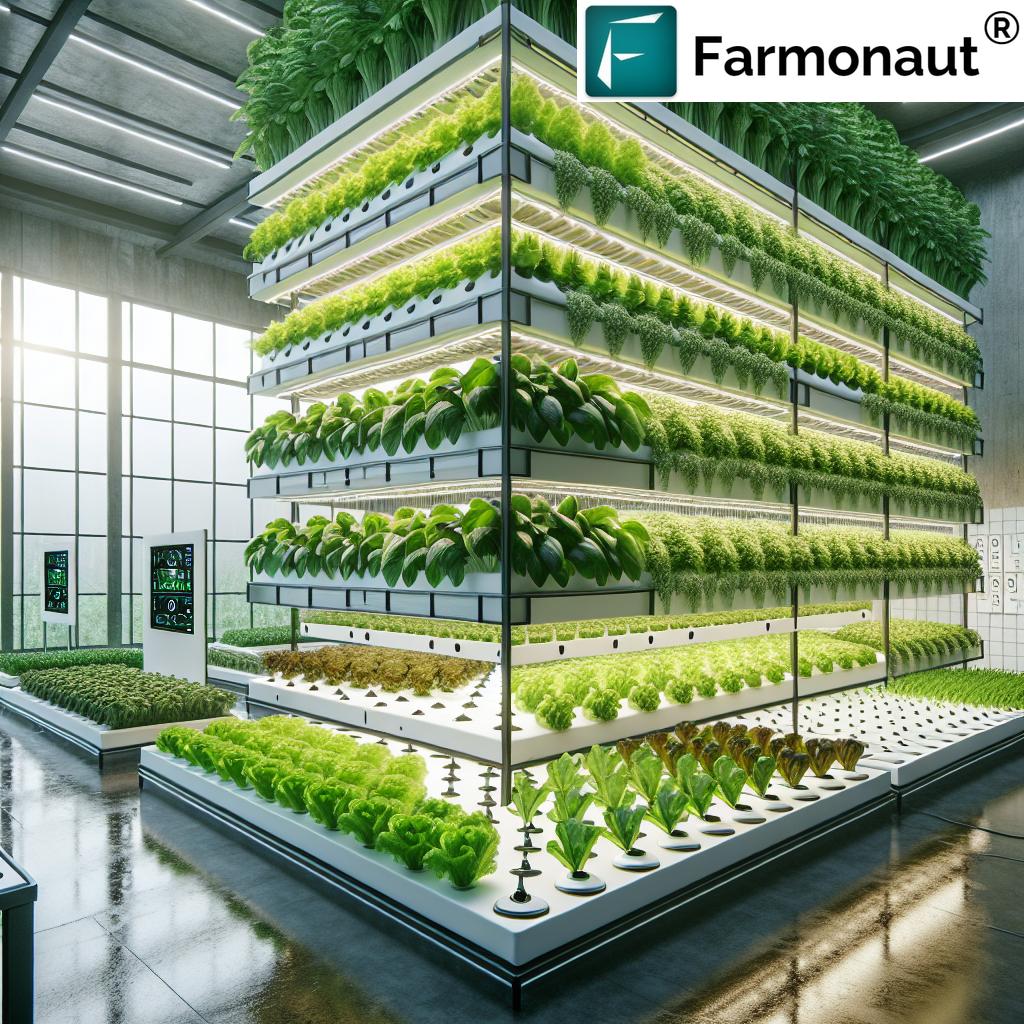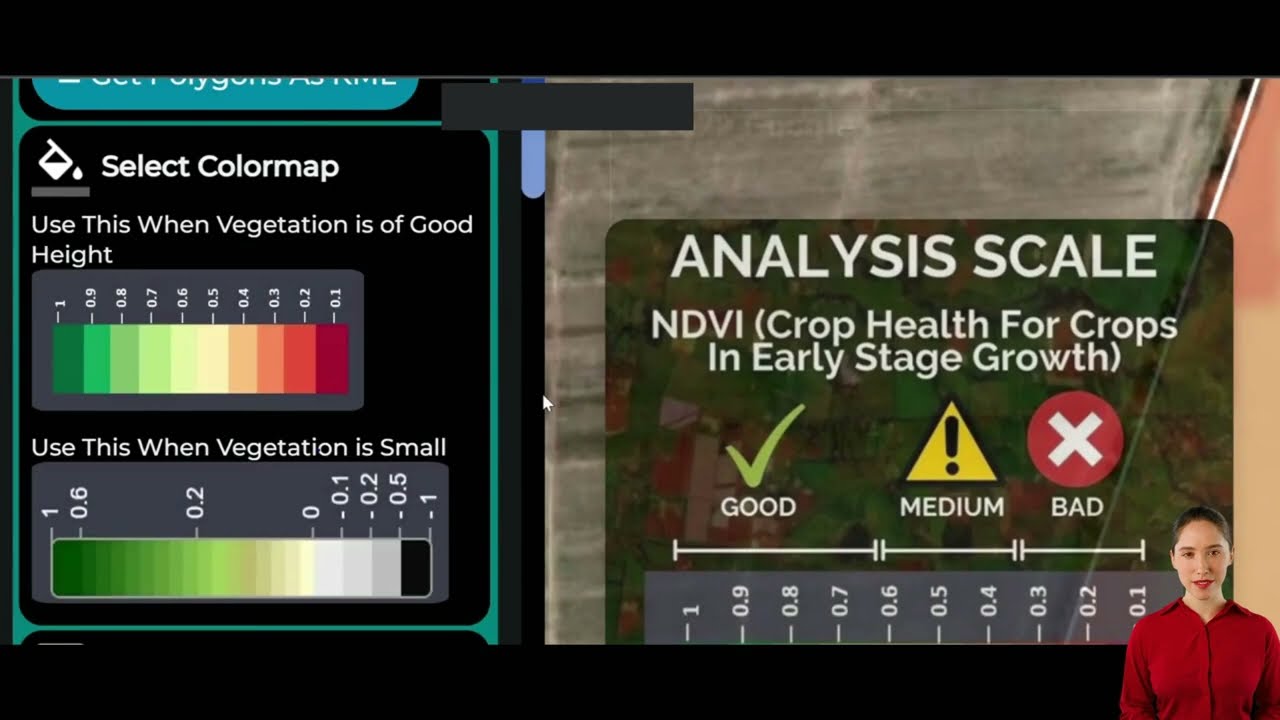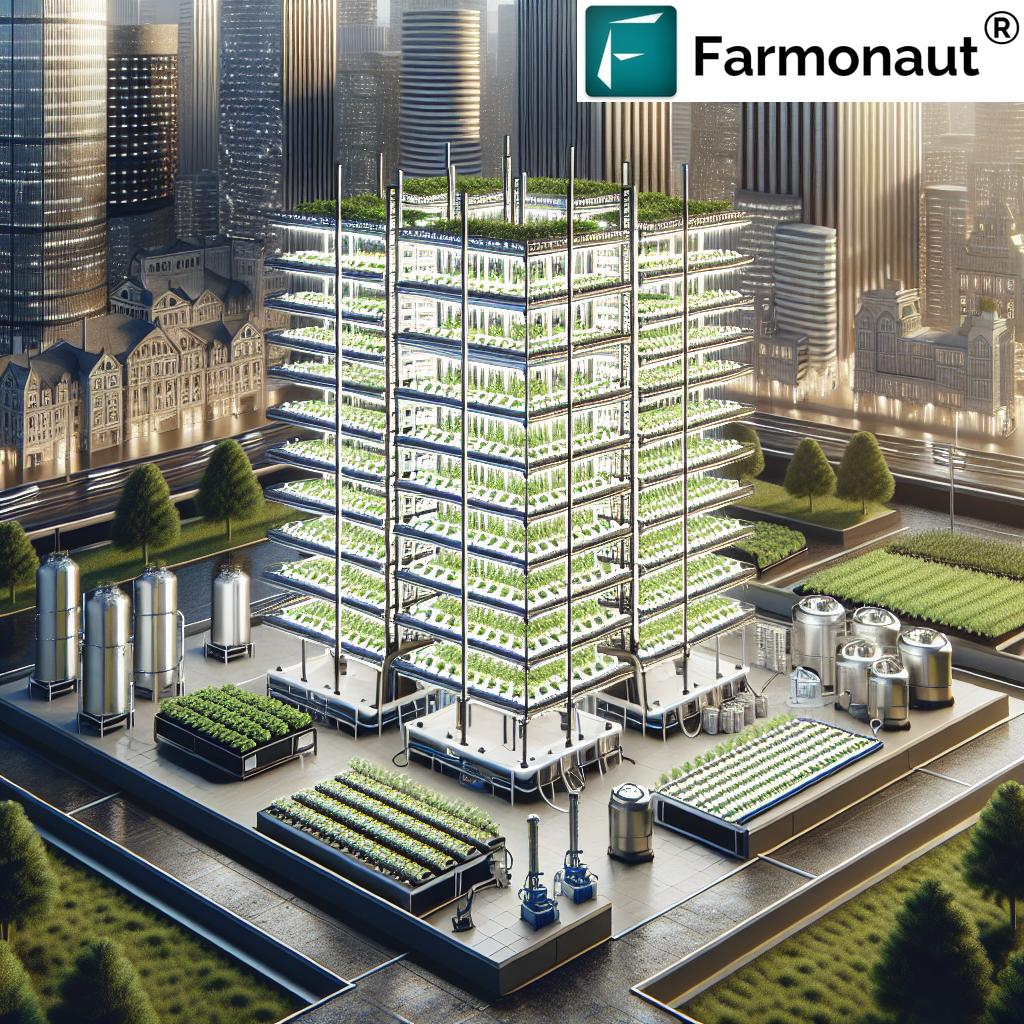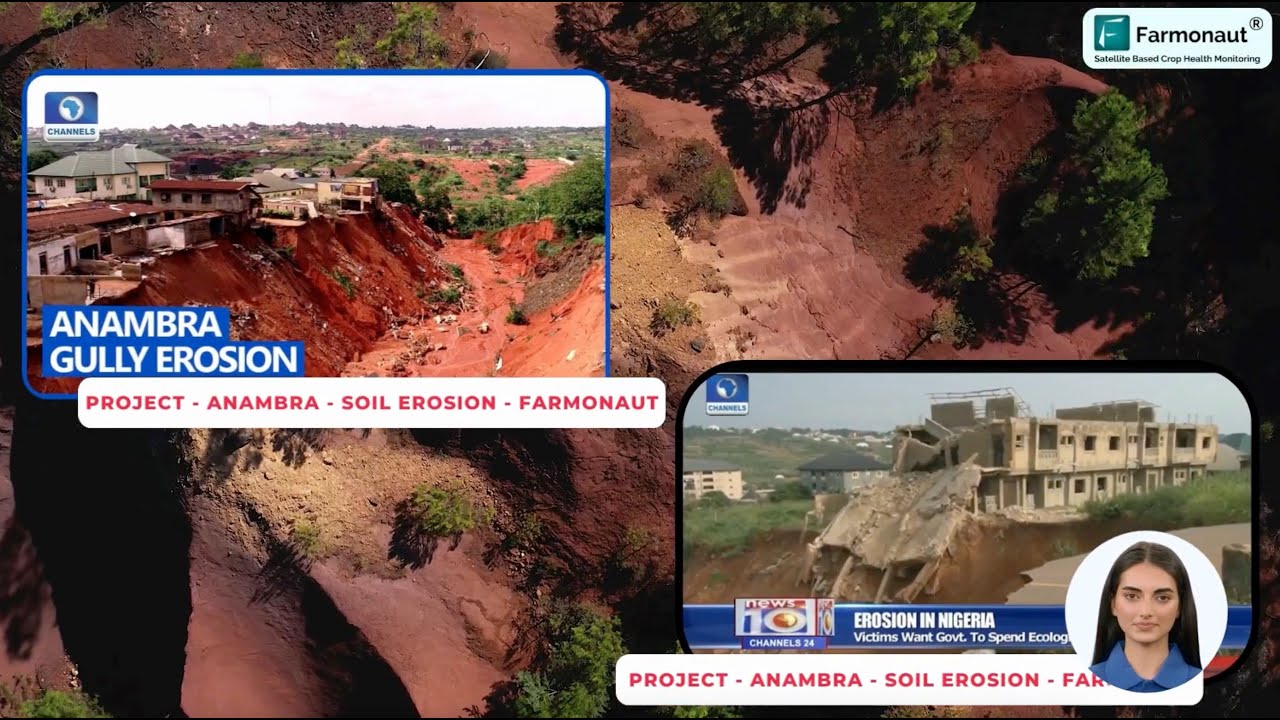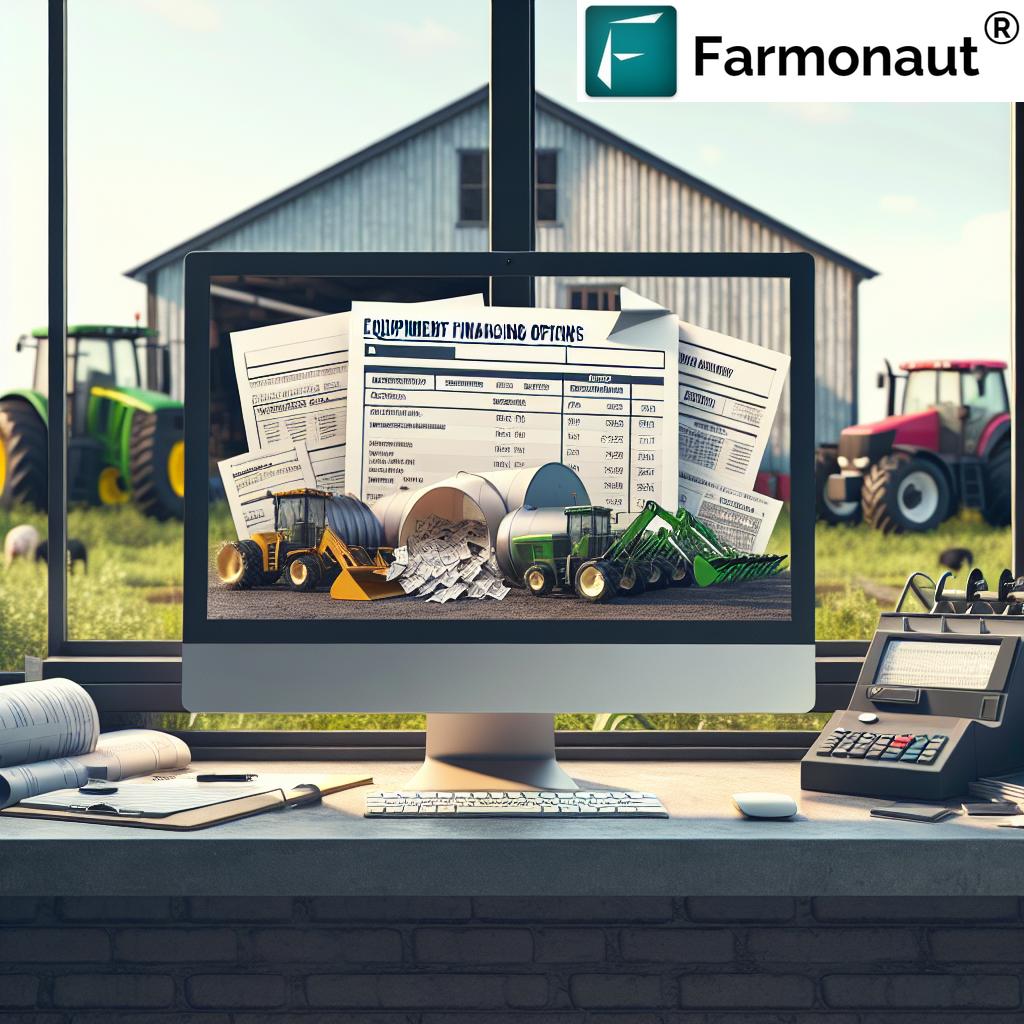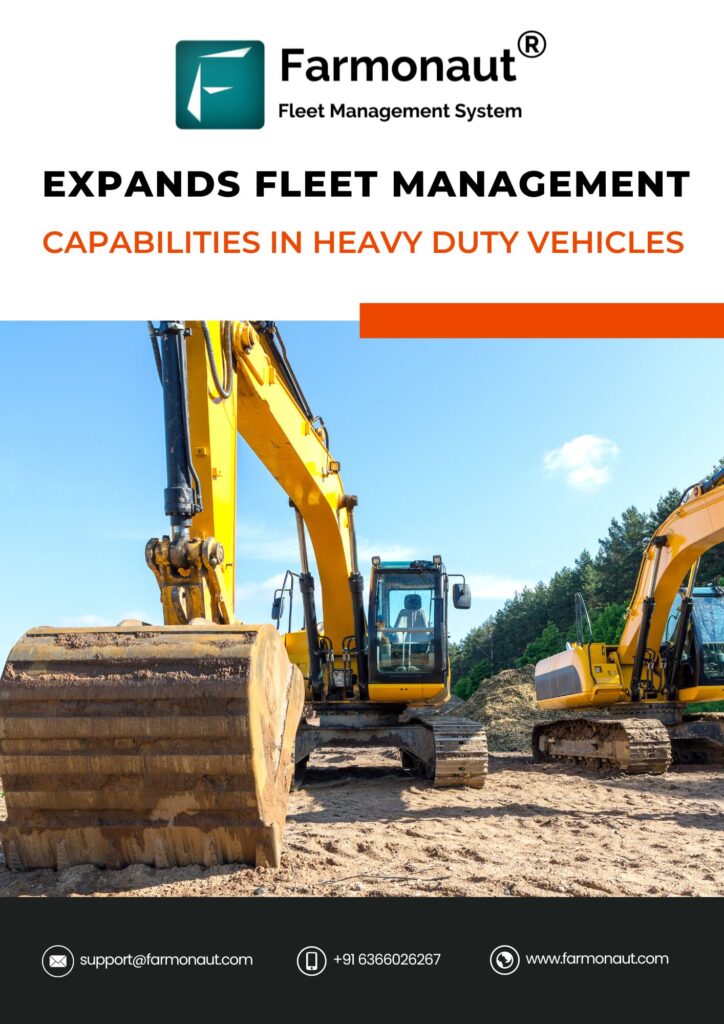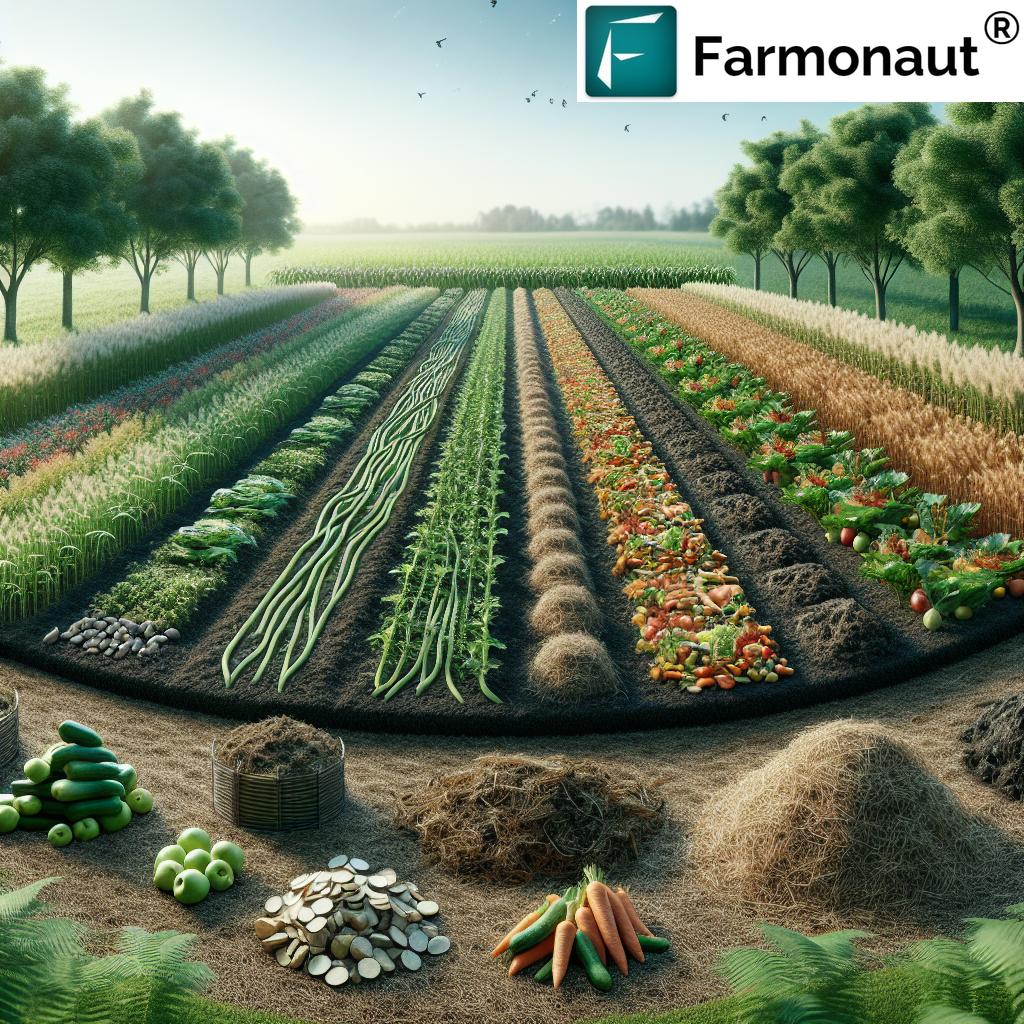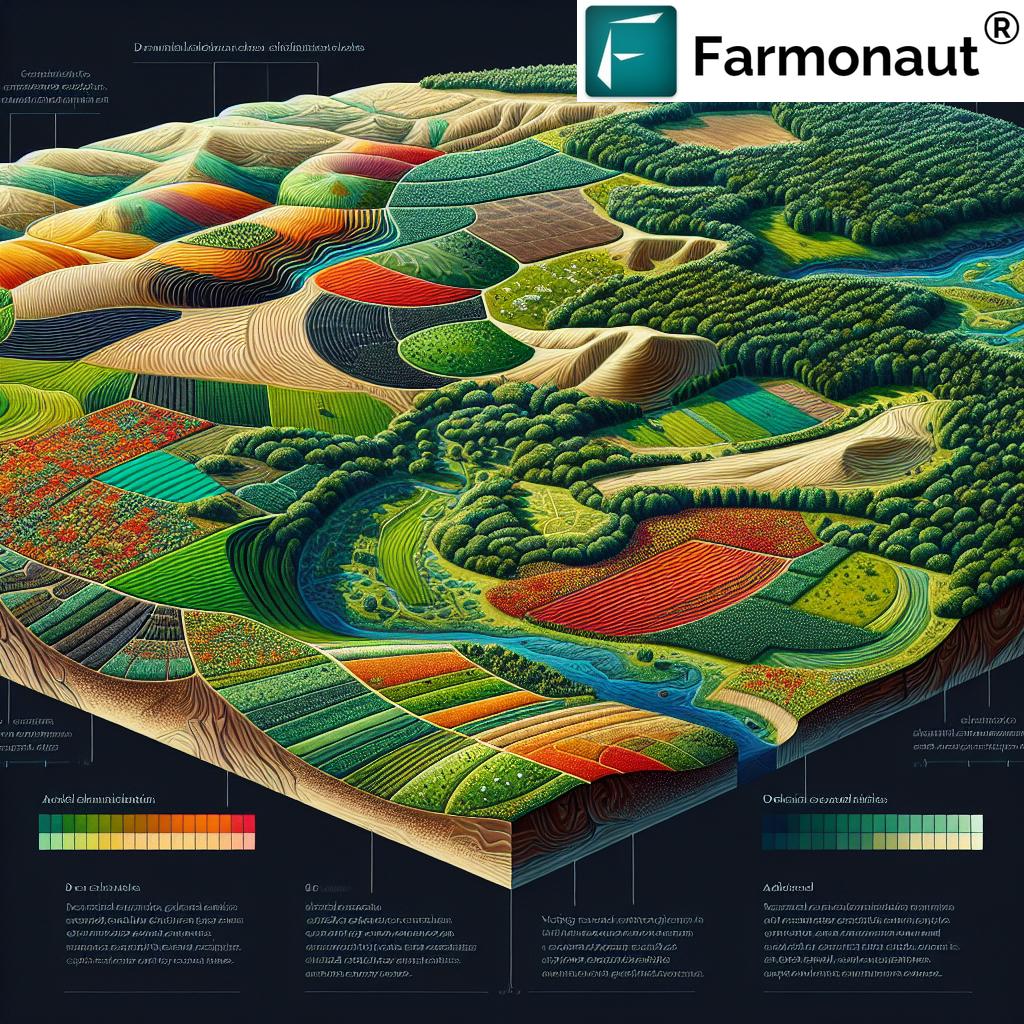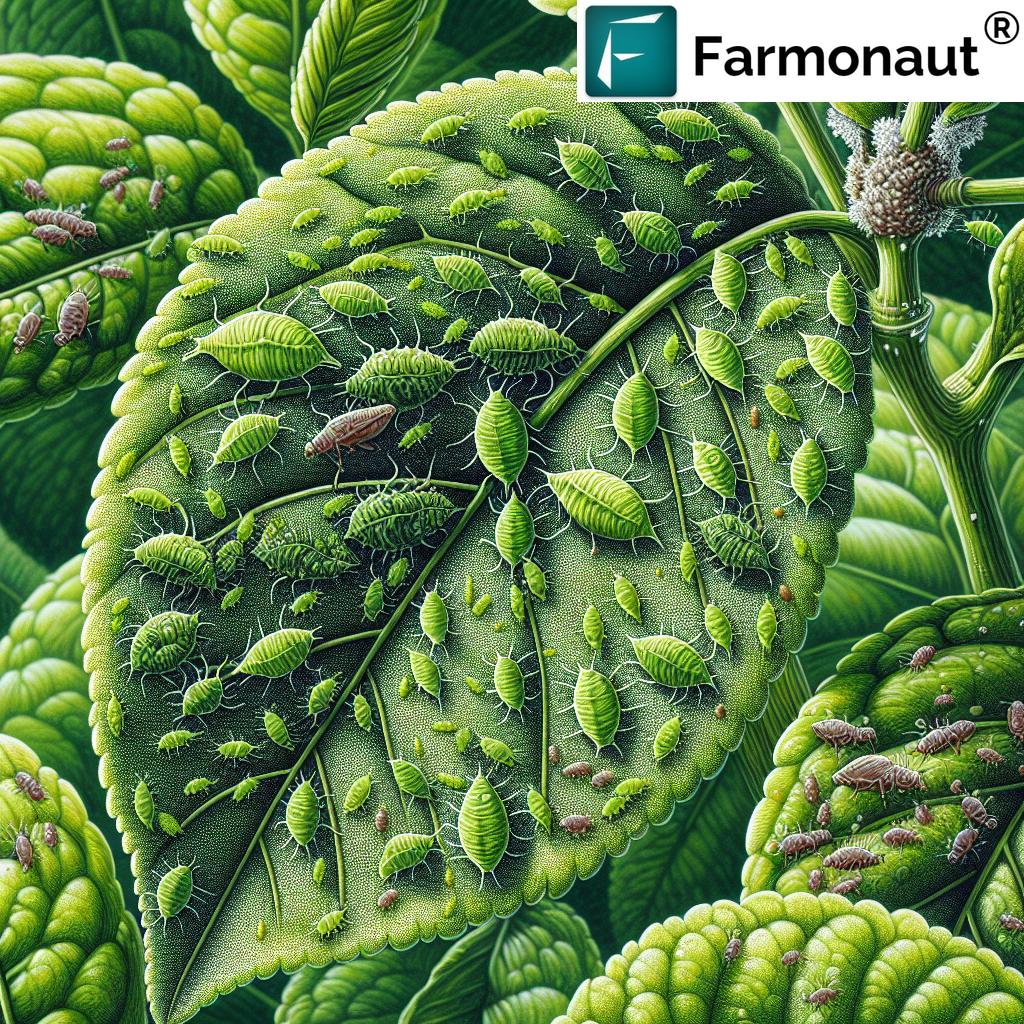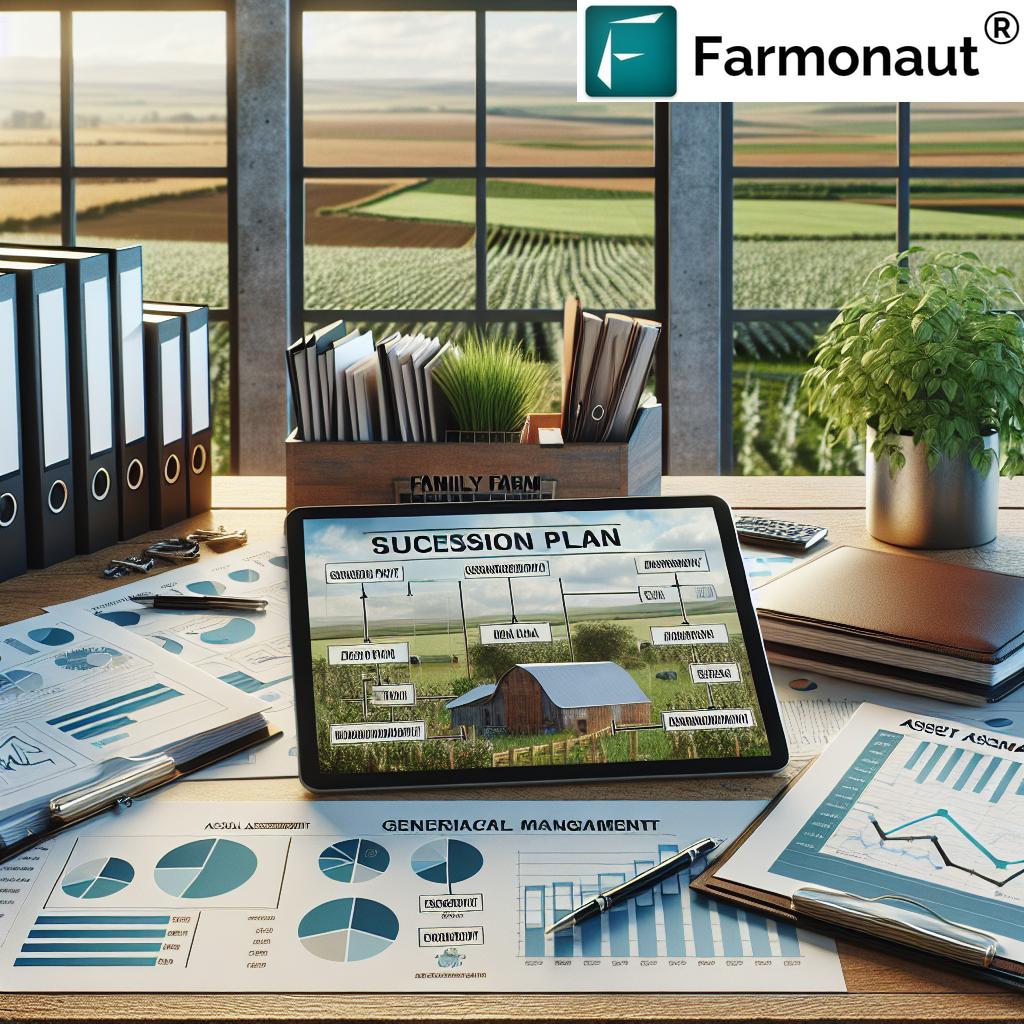Table of Contents
- Introduction: Hydroponic Vertical Farming—Revolutionizing Agriculture
- Did You Know?
- What is Hydroponic Vertical Farming?
- Key Components of Vertical Hydroponic Systems
- Hydroponic Vertical Farming: 7 Shocking Yield Secrets
- Comparative Yield Analysis Table—Traditional vs Hydroponics vs Vertical
- Hydroponic Farming Technology and Innovations
- Environmental and Sustainability Advantages
- Challenges of Hydroponic Vertical Farming + Solutions
- Farmonaut’s Role in Sustainable Vertical Farming & Precision Agriculture
- Farmonaut Exclusive Tools to Enhance Efficiency
- FAQ: Hydroponic Vertical Farming Secrets
- Conclusion: The Future of Hydroponic Vertical Farming
Hydroponic Vertical Farming: 7 Shocking Yield Secrets
Meta Description: Discover 7 shocking yield secrets of hydroponic vertical farming systems—how they maximize crop yields, optimize water use, and enable sustainable urban food production.
Hydroponic vertical farming is revolutionizing agriculture. By combining the power of hydroponics—the soilless cultivation of plants in nutrient-rich water—with vertical farming systems that arrange crops in stacked layers, we open the door to a new era of efficient, sustainable food production. This approach not only tackles longstanding challenges in traditional agriculture like limited arable land, water scarcity, and food security but also paves the way for high yield crop production in urban and peri-urban environments.
“Hydroponic vertical farms can produce up to 10 times more crops per square meter than traditional farming.”
What is Hydroponic Vertical Farming?
At its core, hydroponic vertical farming is an innovative method that reshapes how we cultivate food. Here, plants are grown in stacked layers or in vertically inclined surfaces, all within a controlled environment that ensures optimal conditions for growth. Instead of soil, water filled with tailored nutrients directly nourishes the plant roots.
This approach shines in urban settings with limited land, making it the perfect solution for cities facing arable land scarcity. By leveraging advanced technology and precise environmental control, we achieve not only higher yields per unit area but also year-round, resilient crop production.
Key Components of Vertical Hydroponic Systems
- Hydroponic Systems: Deliver nutrient-rich water directly to plant roots, ensuring efficient uptake for faster growth rates and superior yields.
- Vertical Structures & Stacked Layers: Maximize space utilization by growing plants vertically, allowing increased crop production per square meter—ideal for urban hydroponic farms with scarce land.
- Controlled Environment: Temperature, humidity, light spectrum, and CO₂ levels are precisely regulated for optimal plant growth in indoor vertical farming.
- Automated Hydroponic Systems: Sensors and AI-driven controls automate watering, nutrient delivery, and environmental adjustments, boosting yield efficiency.
- LED Lighting: Full-spectrum, energy-efficient LEDs provide tailored lighting, supporting healthy plant development while minimizing energy consumption.
- Data-Driven Operations: Monitoring tools track growth conditions (humidity, temperature, nutrients), empowering us to make real-time, data-backed cultivation decisions.
Hydroponic Vertical Farming: 7 Shocking Yield Secrets
To unlock the full potential of high yield crop production in our vertical hydroponic systems, let’s explore the seven most surprising secrets driving efficiency and sustainable food production.
1. Maximizing Crop Density Without Compromising Growth
With vertical stacking and the elimination of soil, we can grow more plants per unit area—increasing densities up to 10 times compared to traditional farming methods. By carefully monitoring nutrient levels and light penetration, we prevent overcrowding and maintain healthy, robust growth at all production stages. This not only increases overall yield but also ensures consistent crop quality, a key advantage for urban food solutions.
2. Year-Round Cultivation Enabled by Controlled Environment Agriculture
Traditional agriculture is vulnerable to seasonal variations, temperature extremes, and unpredictable weather. Vertical hydroponic farming methods establish a completely controlled environment—letting us grow crops 365 days a year. We take command of temperature, humidity, light levels, and even CO₂ enrichment, producing multiple harvests annually regardless of external factors. This leads to a remarkable increase in harvest frequency and food security.
3. Automated Nutrient Delivery for Rapid and Consistent Crop Growth
Through advanced hydroponic farming technology, we deliver exact nutrient blends to each plant. Automated hydroponic systems use sensors and AI to monitor pH, EC, and nutrient concentration, feeding roots only what is necessary, precisely when required. This ensures faster growth rates and higher yields, reducing resource waste and maximizing water efficient agriculture.
4. Precision Lighting and Energy Optimization with LED Technologies
One of the keys to high-yield vertical farming systems lies in light optimization. Modern full-spectrum LEDs are engineered to provide the precise wavelengths needed at each stage of plant development while minimizing energy consumption. Automated systems meticulously control light cycles, intensity, and duration, leading to uniform growth, energy savings, and the ability to target plant-specific needs—all critical in indoor vertical farming where sunlight is limited.
5. Unmatched Water Conservation: Up to 90% Less Water Per Harvest
Thanks to hydroponic technology, water is continuously recirculated within a closed system. This dramatically reduces overall usage compared to soil-based agriculture. In fact, hydroponic vertical farms can cut water use by up to 90%—making water efficient agriculture a reality in regions suffering from scarcity. Combined with real-time moisture monitoring, we address both sustainability and cost-effectiveness for all scales of operation.
“Advanced hydroponic systems use up to 90% less water compared to conventional soil-based agriculture.”
6. Reduced Pest Pressure and Minimal Pesticide Use
The enclosed and controlled environment of vertical hydroponic farms drastically limits pest infestations and disease outbreaks. We eliminate the need for broad-spectrum chemical pesticides, enabling the safe production of healthier, cleaner crops. Monitoring systems can also be deployed for early detection of anomalies, ensuring higher survival rates and better consistency across each harvest.
7. Flexible Integration With Urban Environments and Supply Chains
Unlike traditional farms bound by rural land availability, hydroponic vertical farms can be established in warehouses, unused buildings, or rooftops within cities. This localizes crop production, shortens the supply chain, and reduces the environmental footprint associated with food transportation. The direct integration of blockchain-based traceability (like that provided by Farmonaut’s Traceability Solution) brings enhanced transparency and consumer trust to modern food systems.
Comparative Yield Analysis Table—Traditional vs Hydroponics vs Vertical
To truly see the power of hydroponic vertical farming, let’s compare industry-standard estimates for yield, water use, space efficiency, harvest frequency, and energy requirements:
| Farming Method | Estimated Crop Yield (kg/m²/year) |
Water Usage (L/kg) |
Space Utilized (m²) |
Harvest Frequency (per year) |
Energy Consumption (kWh/kg) |
|---|---|---|---|---|---|
| Traditional Farming | 3–6 | 200–300 | 1.0 | 1–2 | 0.2–0.5 |
| Standard Hydroponics | 20–30 | 20–40 | 1.0 | 6–8 | 0.8–1.2 |
| Hydroponic Vertical Farming | 60–100+ | 2–6 | 0.1–0.2 (per layer) | 10–12+ | 1.5–2.0 |
Note: Values represent industry averages. Actual data may vary depending on the crop type, technology, and system design. Yields per square meter and water use are strikingly better in hydroponic vertical systems.
Hydroponic Farming Technology and Innovations Powering Vertical Systems
-
Automated Hydroponic Systems:
We harness AI and IoT-based controls for real-time data monitoring—adjusting temperature, humidity, nutrient delivery, and crop growth rates without manual labor. This enables scalability and minimizes downtime. -
Advanced Sensor Networks:
Precise monitoring of environmental factors such as pH, EC, moisture, CO₂ and light lets us tailor conditions to each growth phase and crop. -
Modular Vertical Racking:
Stacked layers and adjustable towers in modern vertical farms optimize space and make it easy to scale up or reconfigure our operations—especially for urban integration. -
Robotic Planting & Harvesting:
Using robotics to automate precise planting, harvesting, and transport saves time, reduces human error, and increases output in high-volume production facilities. -
AI-Driven Crop Management:
Machine learning systems analyze historical and live data, providing tailored actionable insights for maximizing efficiency and further pushing the limits of vertical hydroponics.
Environmental and Sustainability Advantages of Vertical Hydroponic Farming
1. Reducing Water Consumption and Waste
- Closed-loop systems recirculate water, drastically reducing overall use.
- On average, hydroponic vertical farms consume up to 90% less water per crop than conventional agriculture.
2. Minimizing Land Footprint and Urban Agricultural Integration
- Vertical farming’s space efficiency makes it possible to grow large yields in a small footprint, freeing arable land for natural ecosystems.
- We can transform unused city rooftops, basements, and warehouses into high-yield urban hydroponic farms, promoting local food resilience.
3. Lowering Chemical and Pesticide Reliance
- An enclosed system largely eliminates pathogens and pests, so we use significantly fewer pesticides—good for our health and the environment.
4. Energy Efficiency and Smart Resource Use
- LED lighting systems, AI-based controls, and innovative environmental management make energy use increasingly efficient.
- These improvements reduce the carbon footprint per kilogram of produce—especially compared to traditional, transport-heavy agriculture.
For advanced sustainability monitoring, see Farmonaut Carbon Footprinting Tools, which allow agribusinesses to measure and manage their emissions in real time.
Challenges of Hydroponic Vertical Farming + Solutions
1. High Initial Investment
-
Setting up a vertical hydroponic farm demands significant investment in infrastructure, technology, and system installation.
Solution: Modular, scalable systems can be started small and expanded as market demand grows, spreading costs over time.
2. Energy Costs and Optimization
-
Operating LED lighting and climate controls in areas with inadequate natural light can increase energy bills for indoor vertical farming.
Solution: Leveraging the latest energy-efficient LEDs, automation, and environmental management can reduce overall energy consumption while maximizing crop yield. Energy tracking platforms (like Farmonaut Carbon Footprinting) further help identify savings strategies.
3. Technical Expertise Required
-
Operating hydroponic vertical systems requires an understanding of plant physiology, nutrient chemistry, automation, and IT systems.
Solution: Training programs and intuitive, user-friendly farm management platforms (e.g., Farmonaut Large Scale Farm Management) are making these technologies more accessible for all growers.
4. Market Acceptance of Hydroponically Grown Food
-
Consumers may be skeptical about the taste, nutrition, or safety of hydroponic produce.
Solution: Transparent supply chains (powered by blockchain—see Farmonaut Product Traceability) and proactive education campaigns help build trust and demand in the market.
5. Scaling and Data Integration
-
As farms grow, integrating data from sensors, satellites, and various systems can be challenging.
Solution: Cloud-based, API-accessible, and mobile management solutions like Farmonaut’s Satellite & Weather API and
Developer Docs enable seamless integration, scalability, and precise crop monitoring across regions.
Farmonaut’s Role in Sustainable Vertical Farming & Precision Agriculture
As hydroponic vertical farming expands globally, digital intelligence and remote monitoring play a vital part in maximizing efficiency, sustainability, and profitability. Farmonaut is at the forefront of this revolution, offering a comprehensive, AI- and satellite-driven platform designed for modern agriculture.
-
Satellite-Based Crop Health Monitoring:
With multispectral satellite imagery, Farmonaut delivers real-time insights into crop health (NDVI), soil moisture, and key plant metrics. This empowers vertical and hydroponic growers to make precise, data-driven decisions for nutrient dosing, irrigation schedules, and resource allocation. This is crucial for optimizing both yields and resource efficiency in indoor vertical farming. -
AI-Based Advisory with Jeevn AI:
AI-driven personalized advisory provides tailored crop management suggestions based on real-world data and scientific research, increasing farm productivity and minimizing risks. -
Blockchain-Based Product Traceability:
Farmonaut ensures transparent, tamper-proof records for every stage from seed to harvest, building consumer trust and compliance for high-value urban hydroponic farms, especially relevant in local supply chains.
Learn more about Product Traceability ↗️ -
Resource, Carbon & Fleet Management:
With dedicated tools for monitoring emissions, optimizing machinery, and tracking resource inputs, Farmonaut helps farms (from small to government scale) improve sustainability and lower operational costs.
Explore Carbon Footprinting ↗️
|
Explore Fleet Management ↗️ -
Financing & Insurance Support:
By providing satellite-based verification capabilities, Farmonaut enables easier, fraud-resistant crop insurance and loan approvals through Crop Loan & Insurance solutions.
Farmonaut Exclusive Tools to Enhance Efficiency
Whether you’re running a small indoor hydroponic vertical farm or managing expansive agricultural estates, Farmonaut’s subscription-based model provides affordable, scalable access to state-of-the-art crop monitoring, resource tracking, and advisory tools.
-
Web, Android, and iOS Apps:
Access your farm’s vital signs and actionable insights on the go, from any device. -
Developer & Data Integrations:
Connect your hydroponic farm sensors or remote monitoring infrastructure via
API Access and
Developer Docs
for seamless automation and reporting. -
Large-Scale Farm Management:
Easily manage hundreds of hectares (or multi-layered urban systems) with intuitive dashboards and mapping features.
Discover Large Scale Farm Management Tools ↗️
FAQ: Hydroponic Vertical Farming Secrets
What is the main advantage of hydroponic vertical farming?
Hydroponic vertical farming maximizes yield per square meter, offering year-round production of high-quality crops with minimal water use. Its space efficiency and ability to operate in urban environments make it ideal for sustainable food production.
Can hydroponic vertical farms really use 90% less water?
Yes! Because water is recirculated in a closed system and only delivered directly to roots when needed, advanced hydroponic systems can use up to 90% less water than conventional methods.
Are vertical hydroponic crops safe and nutritious?
Absolutely. In fact, food grown in controlled hydroponic vertical systems is often more consistent, clean, and free of chemical pesticides, with nutrition levels matching or exceeding field-grown alternatives.
How does Farmonaut help hydroponic vertical farmers?
Farmonaut delivers crop health monitoring, climate and resource management, fleet and traceability solutions, and AI-powered advisory—all accessible via app or API—for superior precision and sustainability. Explore Farmonaut’s Platform.
Can I automate my entire vertical hydroponic system?
Yes. With the right sensors, software, and AI (like those supported by Farmonaut technologies), you can automate everything from nutrient dosing and irrigation to harvesting and environmental optimization.
Is vertical hydroponic farming cost-effective for small urban growers?
When factoring in savings on water, land, fertilizer, pesticides, and transport, hydroponic vertical systems can be highly economical—especially as energy costs are increasingly managed via smart controls and software platforms.
What crops work best in vertical hydroponic systems?
Leafy greens, herbs, strawberries, and microgreens thrive due to their short growth cycles and compact size. New research is continuously expanding possibilities for fruiting and high-value specialty crops.
Conclusion: The Future of Hydroponic Vertical Farming
Hydroponic vertical farming systems offer a transformative solution to global food security, resource conservation, and sustainable agriculture. By combining innovative technology, advanced data-driven management, and space-saving vertical cultivation, we can drive high yield crop production with a greatly reduced environmental footprint.
With digital tools such as those from Farmonaut, growers of all scales can tap into these advantages, making informed, efficient decisions while meeting the growing demand for fresh food in our urbanizing world. The future of agriculture is here—vertical, hydroponic, and powered by precision technology.


